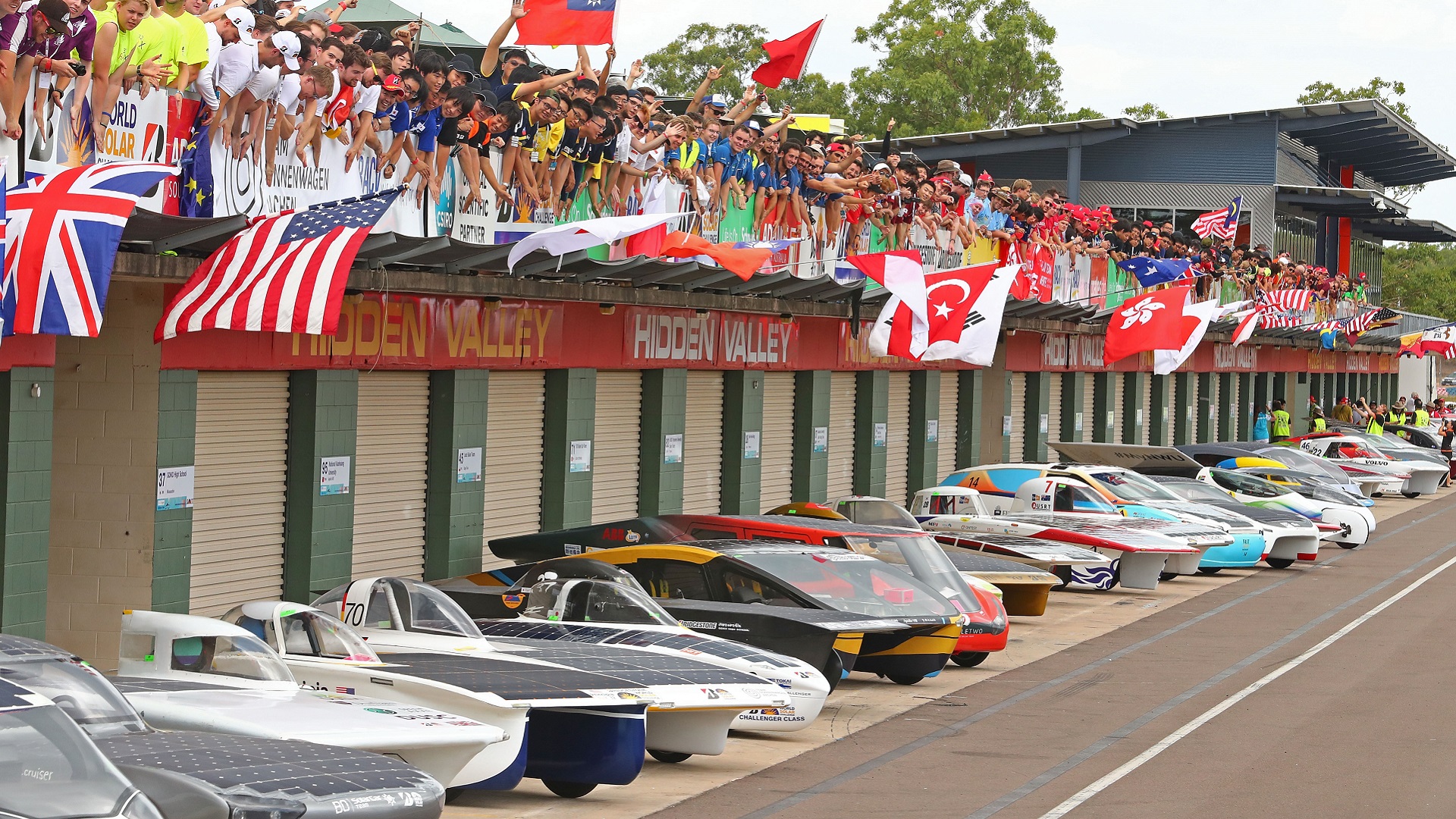

Sunday marked the beginning of the 2017 Bridgestone World Solar Challenge, a solar-powered car race across Australia. The race begins in Darwin, on the north coast of Australia, and runs 1,880 miles south to Adelaide, on the south coast. This year marks the 30th anniversary of the event. It ran every three years starting in 1987 and every other year since 1999.
Needless to say, the technology in these cars has improved significantly over the years. The winner of the 1987 event was the General Motors “Sunraycer,” which completed the race at an average speed of 66.9 kilometers per hour (41.5 miles per hour). This was much faster than the second place Ford Australia “Sunchaser,” which averaged 44.48 kilometers per hour (27.63 miles per hour), and the Biel College of Engineering entry which averaged 42.93 kilometers per hour (26.67 miles per hour).
In contrast, the top two teams in the 2015 race, the Nuon Solar Car Team’s “Nuna 8” and Team Twente’s “Red One” both averaged around 91 kilometers per hour (56.5 miles per hour). By 2005, teams were actually being held back by South Australia’s 110 kilometers per hour (68.3 miles per hour) highway speed limit, which the cars were now capable of exceeding.
Advances in solar panel technology have also had an effect on the World Solar Challenge. Cars competing in this year’s race may have no more than 43 square feet of solar cell surface area, reports Engadget. That’s down from nearly 65 square feet allowed in the last race in 2015, and half the area allowed in the 1987 race. Today’s solar panels are more effective, and the cars are using the power they generate more efficiently.
We’re still far from having mass-produced vehicles that run on solar power alone. But with many auto manufacturers announcing a major shift to electric vehicles, these improvements in solar technology could help address the issue of range anxiety. What easier way could there be to recharge your car than to let it sit in the parking lot at work? Some cars, like the Nissan Leaf, are already available with small solar panels to help run accessories. Perhaps in another 30 years, the World Solar Challenge will include a category for production cars since there might just be some that would qualify.